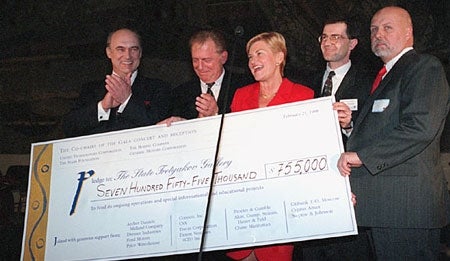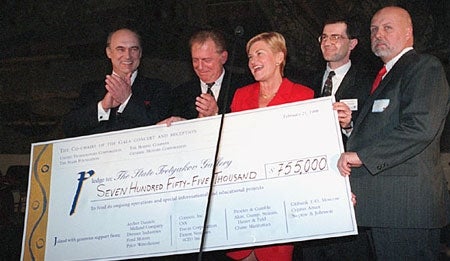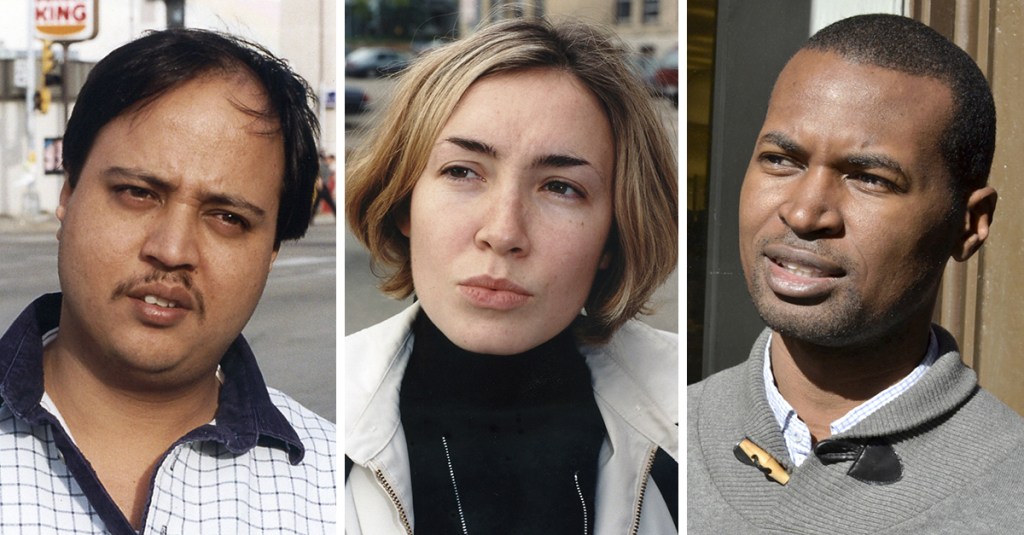WASHINGTON, DC–The National Corporate Philanthropy-Misanthropy Ratio held steady at 1:770 in the third fiscal quarter of 1998, the U.S. Department of Commerce announced Tuesday.

According to the department’s latest quarterly report, for every scholarship program, literacy drive, art exhibition or tree-planting project sponsored by U.S. corporations between July and September 1998, there were 770 acts of covert pollution, foreign-labor exploitation, worker-safety violations and profit-driven downsizing.
Though corporate America doubled its conspicuous good works during the third quarter of 1998, the increase was offset by a concurrent doubling of unethical and illegal acts, leaving the overall philanthropy-misanthropy ratio unchanged.
The Commerce Department report cited the example of Dallas-based oil-refining giant ITX Petroleum, which in October raised $50,000 for the United Negro College Fund with a $400-a-plate charity ball. That same month, oil spills from unsound ITX offshore wells contaminated hundreds of miles of Gulf of Mexico coastline, killing millions of sea-dwelling creatures and putting hundreds of fishermen out of work.
“The men from the American company gave everyone in my village free measles vaccinations when the camera crews were here two summers ago,” Mexican laborer Jorge Sanchez said. “On the other hand, their pipeline burst last week, burning thousands of villagers alive in a lake of flaming oil.”
Though it has fluctuated over the years, the National Corporate Philanthropy-Misanthropy Ratio has not dipped below the 1:600 mark since the 1930s, when automobile tycoon Henry Ford established the Ford Foundation, his art- and education-funding organization. During those same years, the Ford Motor Company was profiting from trade with Nazi Germany chemical giant and Zyklon-B poison-gas manufacturer I.G. Farben, and publishing anti-Semitic editorials in The Dearborn Independent.

The Corporate Philanthropy-Misanthropy Ratio was established by the Commerce Department in 1914. The ratio hit an early peak of 1:300 in 1920, when Standard Oil tycoon John D. Rockefeller began making a public show of distributing dimes to children while ruthlessly crushing his competitors, often through violent means.
In the decades since, corporate philanthropy has steadily grown, today encompassing everything from funding AIDS research organizations to underwriting PBS’ Mystery! That growth, however, has been accompanied by an even greater rise in misanthropy, as the corporate elite continues to consolidate its power base and operate under fewer and fewer constraints, abusing its power whenever profit motive dictates.
“I never miss the Environmental Media Awards,” said NBC executive Carl Unger, arriving at the annual gala awards ceremony honoring excellence in positive media portrayals of environmental issues. “The pomp, the glamour, the celebrities–it’s a fabulous night of black-tie opulence that can be enjoyed without guilt.” NBC’s parent company, General Electric, continues to manufacture thermonuclear weapons components, producing profits at a staggering rate.
According to Wharton Business School professor Milton Scheidt, one publicly donated charity dollar is the equivalent of 100,000 privately hoarded ones. “By keeping a limited number of these ’inflated’ charity dollars in circulation at all times,” Scheidt said, “corporations can generate sympathy and public-perception ’breathing room’ for misanthropic expansion in the future.”
“By tossing the occasional crumb to a worthy cause, I’m able to feel much better about the rest of my vast fortunes,” Consolidated Chemicals CEO Patrick Farnsworth said. “The best part is, I don’t actually have to give away all that much. Where charity is concerned, a little goes a long way.”







